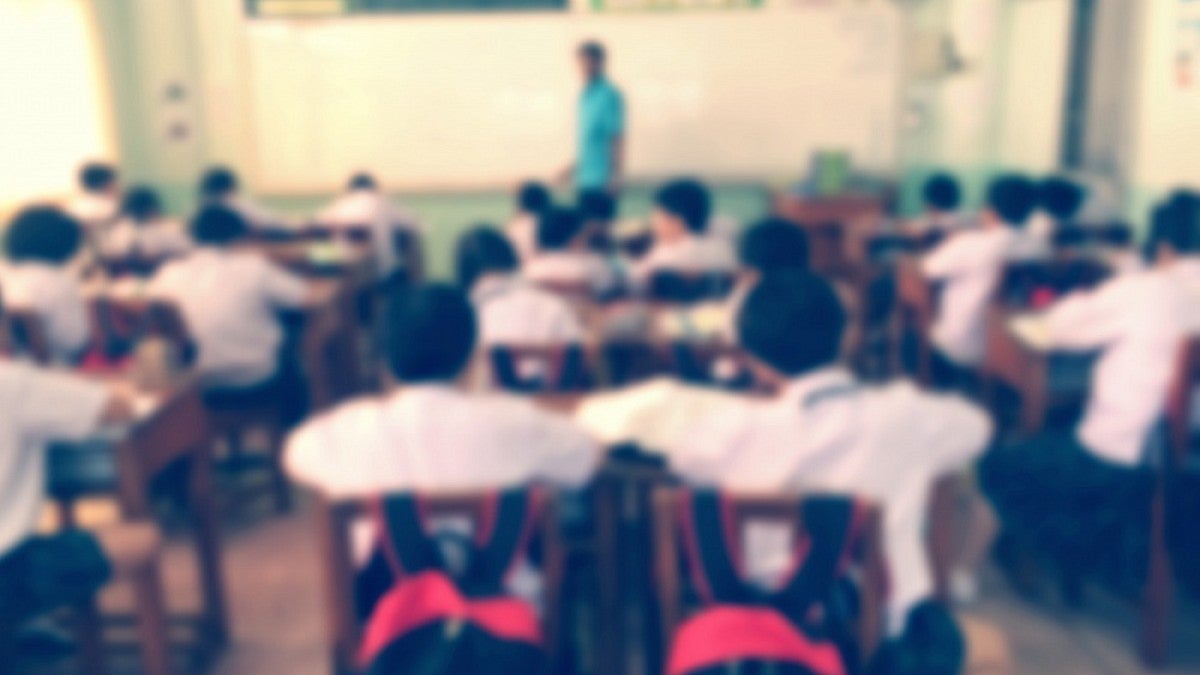In 15 public middle schools in rural Oregon, UO education researcher Mark Van Ryzin is testing an old approach proven to enhance learning to see if it can be adapted to head off behavioral problems. It appears to be working.
Early results, emerging in a series of papers, indicate that after one year, seventh-grade students in seven test schools are less likely to seek out deviant peer affiliation and drink alcohol, or even show a willingness to try it, when compared to their counterparts at eight control schools. The data also indicate a reduction in bullying behavior, stress, emotional problems and tobacco use, as well as an increase in peer relations.
Middle schools in the Lane, Southern Oregon and High Desert education service districts are participating, said Van Ryzin, a lecturer in the Department of Educational Methodology, Policy, and Leadership and a research scientist at the Eugene-based Oregon Research Institute.
The research is being done in middle schools because that’s where peer influences begin to increase student vulnerability to undesired behaviors, he said. The project involved 1,460 students, who were 52 percent male and 76 percent white. Rural schools were chosen, Van Ryzin said, because they often lack resources.
After one year in the project, Brad Eaton, principal of Scenic Middle School in Central Point, is pleased.
“The data on our school showed a large impact on students feeling more connected to the school and the people in it, which is exciting to me as a building leader,” Eaton said. “For teachers, this provided additional engagement and active participation strategies that were supported by research on student achievement. For students, it allowed them to create interpersonal connections with others outside their normal peer group.”
The intervention uses cooperative learning, an academically inspired approach developed in the 1960s by David W. Johnson and Roger T. Johnson of the University of Minnesota. It was originally designed to promote cooperation in a way that taps individual efforts to achieve group learning goals.
As a graduate student at Minnesota, Van Ryzin took courses from David Johnson and wondered if cooperative learning, which had already been found to boost student academic engagement and achievement, could also address the negative peer processes that are at the root of a number of student behavioral problems.
“Cooperative learning isn’t new,” he said. “It’s been around for a long time. If it isn’t implemented well, however, it won’t work, and in fact it could be a negative experience for students. Our approach is going back to core principals of cooperative learning, providing teachers with the tools to do it correctly within an existing curriculum and without following a cookbook-like mentality.”
The Johnsons, who head the Cooperative Learning Institute in Minnesota, have helped in Van Ryzin’s training sessions for teachers, using the book “Cooperation in the Classroom” as their guidebook. Training sessions for the project’s first year, 2016–17, were done in three half-day sessions with additional videoconference check-ins and access to resources to implement the program.
Teachers randomly place students in small groups to tackle short-term projects. Each student gets a specific task to contribute as part of a group’s solution. The approach emphasizes individual accountability, face-to-face interactions and the development of collaborative skills. It promotes positive social interactions that reduce alienation and counters situations in which some students feel left out of the selection process or where one student does all the work.
“The idea is to build interconnected social networks that are free of cliques, without boundaries, without exclusion, without conflicts,” Van Ryzin said.
Preliminary findings, based on data from the first year of a still-ongoing study funded by the National Institute on Alcohol Abuse and Alcoholism, are beginning to land in journal articles. One paper was published in mid-December, another was accepted for publication and a third is under review.
Initial data analysis focused on alcohol use because seventh-graders are at the cusp of increasing exposure and experimentation, which raises the risk of educational problems, substance abuse problems, brain impairments, diseases and diminished work capacity.
In a paper in the December issue of the journal Child Development, the researchers reported on the effects of cooperative learning on engagement with deviant peers and the use of and willingness to try alcohol.
“The goal is to improve the social climate of the school by essentially giving students the opportunity to make new friends outside of their existing social groups,” wrote Van Ryzin and co-author Cary J. Roseth of Michigan State University.
A second study, accepted for publication in the Journal of Educational Psychology, will detail their preliminary findings showing a reduction of bullying, victimization, stress and emotional problems in the same middle schools. In a third paper, appearing soon, Van Ryzin and Roseth will report additional details on cooperative learning’s impacts on peer influences related to alcohol and tobacco use.
The current project is in its second year. Van Ryzin is recruiting schools for a larger, second phase that likely will include some high schools.
“We’d like to look at things like teen dating violence and sexual harassment in high school,” he said. “At some point, I’d like to explore this approach at the university level, especially with teachers in freshmen introductory classes.”
Van Ryzin, a native of Wisconsin, moved to Eugene in 2009 to join UO College of Education faculty members doing research at the Oregon Social Learning Center. In 2012, he moved to the Oregon Research Institute. He joined the UO in 2013.
—By Jim Barlow, University Communications


